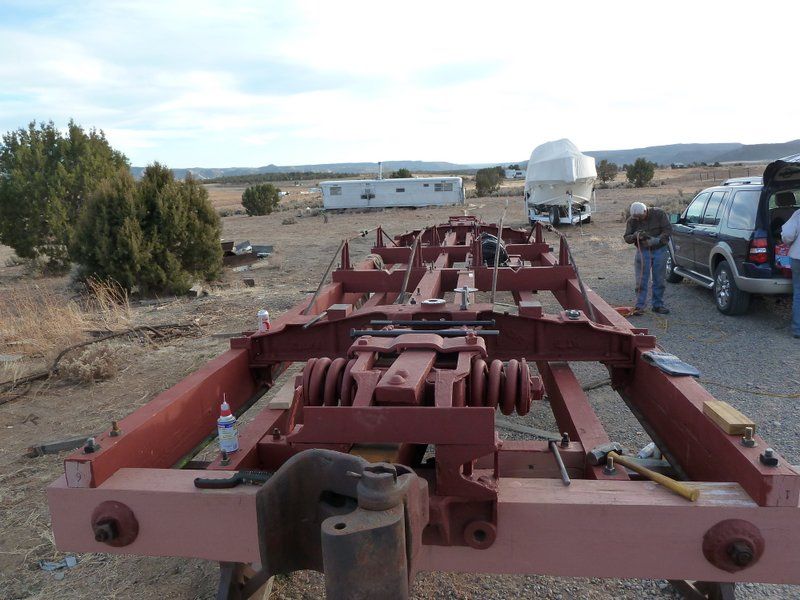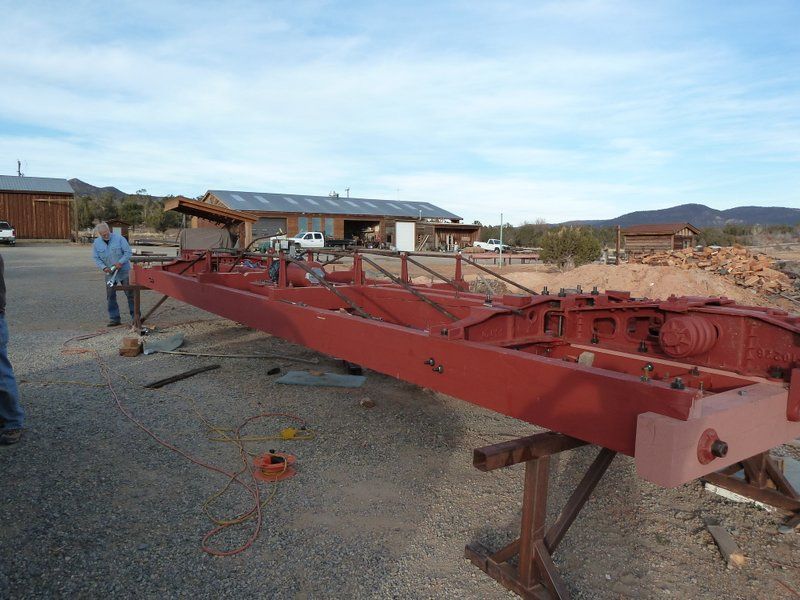Dave,
I have done narrow gauge car restoration for the Cumbes & Toltec Scenic Railroad for the last 14 years. My rule of thumb is to torque the truss rods to the point the body sills are straight. This needs to be accomplished with the structure setting on the trucks with the normal load on the sills. Think of the sills as a moment arm with the fulcrums located at the truck bolsters.
One thing to keep in mind for the future. As the lumber in the structure continues to season and dry out over the coming years, dimensionally the car shrinks in all axis. Everywhere there is a bolted joint will require retightening in the future, until the wood as seasoned.
Really nice looking body frame and quality of workmanship. You folks are doing a great job! Look forward to seeing future pics as the project progresses. There is a lot of satisfaction in working in 12 inches to the foot!
“SAFETY FIRST”
Jerry





